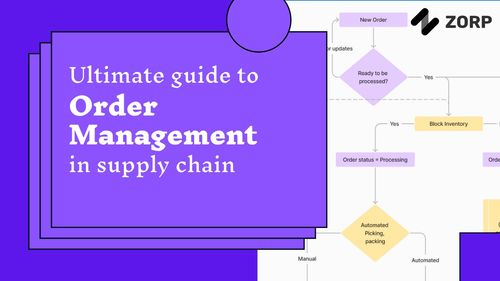Mobility as a Service (MaaS) has become a buzzword in recent years, revolutionizing the transportation industry by integrating various transportation services into a single, seamless digital platform. MaaS is an innovative concept that combines public and private transportation services, allowing users to access a range of mobility options through a single app, with the goal of reducing dependence on personal vehicles and promoting sustainable transport methods.
There are several factors that have driven the growth of MaaS, including rapid urbanization, increasing traffic congestion, and a growing demand for convenient and eco-friendly transport alternatives. Additionally, advancements in technology and the rise of the sharing economy have contributed to the popularity of MaaS.
MaaS offers numerous benefits for users, transport providers, and cities alike. For users, MaaS simplifies trip planning, ticketing, and payments, making transportation more convenient and efficient. For providers, it opens new revenue streams and opportunities for collaboration. Cities benefit from reduced congestion and pollution, as well as improved access to transportation for all citizens.
Explore the pivotal role of electric vehicles (EVs) in shaping the future of Mobility as a Service (MaaS). 🚗⚡ Our latest blog post delves into the sustainable and innovative contributions of EVs to the evolving landscape of MaaS. Stay informed and discover how these advancements are revolutionizing transportation. Read more: The Role of Electric Vehicles in Mobility as a Service.
There are three primary business models for MaaS: subscription-based, pay-as-you-go, and integrated.
In this model, users pay a monthly fee for access to a range of transportation services. This model is similar to the concept of Netflix for transportation, where users have unlimited access to a variety of mobility options for a fixed price. An example of a subscription-based MaaS provider is Whim.
The pay-as-you-go model allows users to pay for transportation services on a per-use basis. This model is more flexible and may appeal to users who do not require regular access to multiple transportation modes. Uber and Lyft are examples of pay-as-you-go MaaS providers.
In an integrated model, MaaS providers collaborate with multiple transportation services to create a seamless, interconnected network of mobility options. Users can access public transit, ride-hailing, bike-sharing, and more through a single app, with integrated ticketing and payment systems. A great example of an integrated model is Citymapper.
Several companies have achieved success with their MaaS models, including Whim, Uber, and Lyft.
Whim is a subscription-based MaaS platform that offers users unlimited access to various transportation services, including public transit, bikes, taxis, and car rentals, for a fixed monthly fee. Launched in 2016, the platform has expanded to multiple cities across Europe and North America, and has been praised for its convenience and ease of use. According to a McKinsey & Company report, Whim's integrated platform has resulted in a 5% reduction in personal car use in Helsinki, Finland.
Uber is a global ride-hailing service that operates on a pay-as-you-go model. In recent years, the company has expanded its services to include bike-sharing, e-scooters, and integration with public transit. Uber's commitment to MaaS is evidenced by its acquisition of JUMP Bikes and the integration of public transit information in its app. As per Statista, in 2021, Uber provided over 6 billion rides worldwide, demonstrating the impact of MaaS on urban mobility.
Lyft is another popular ride-hailing service that has embraced MaaS by integrating various transportation options into its app. Users can access ride-hailing, bike-sharing, e-scooters, and car rentals, as well as public transit information. Lyft's continued growth and commitment to MaaS reflect the increasing demand for seamless, interconnected transportation solutions.
Despite the promise of MaaS, there are several challenges that need to be addressed for its widespread adoption and success.
Integrating multiple transportation services into a single platform requires advanced technology and seamless data sharing among providers. This can be challenging, as different providers may use different systems and standards.
MaaS platforms collect vast amounts of user data, raising concerns about data privacy and security. Providers must ensure that user information is protected and comply with data protection regulations, such as GDPR.
MaaS operates at the intersection of public and private transportation, necessitating a robust regulatory framework that balances the interests of various stakeholders. Policymakers must work to create policies that encourage innovation while ensuring safety, accessibility, and sustainability.
The future of MaaS looks promising, with increased adoption of connected technologies, advancements in autonomous vehicles, and a growing emphasis on sustainable transportation. As MaaS continues to evolve, it is likely to play a critical role in shaping the future of urban mobility and creating more efficient, sustainable, and inclusive transportation systems.
Mobility as a Service (MaaS) has emerged as an innovative solution to address the challenges of urban transportation, offering users seamless access to a range of mobility options. As MaaS continues to gain traction, companies like ZORP can help businesses harness the power of MaaS to improve their operations and gather valuable insights about their field and factory teams. By leveraging ZORP's technology platform, businesses can create applications to manage and analyze the work done by their teams, optimizing efficiency and driving growth.
Also, be sure to read "Top 10 Mobility as a Service Providers You Need to Know" on ZORP's blog. It's a quick and informative read that you won't want to skip.

Ready to harness the potential of Mobility as a Service for your business? ZORP can help you create custom applications to manage your field and factory teams while leveraging the benefits of MaaS to improve your operations.


